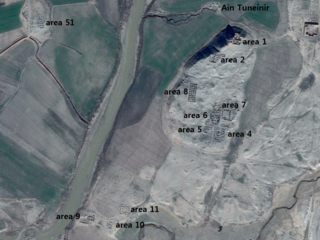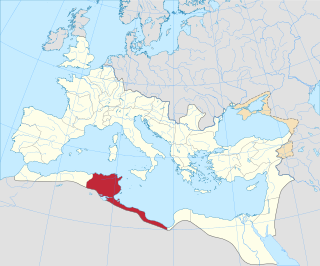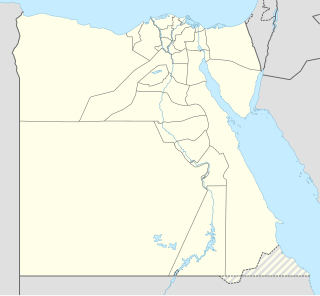 W
WThe diocese of Antipirgo is a suppressed and titular see of the Roman Catholic Church. The Roman town of Antipirgo, is identifiable with Tobruch in today's Libya, but during the Roman Empire it was in the Roman province of Creta and Cyrene and then in late antiquity Libya Inferior (Marmarica), and the bishopric was suffragan to the archdiocese of Darnis.
 W
WThe archaeological site of Grand contains a wide amphitheater and a mosaic of 232m². It is located in the French department of Vosges, in the region Grand Est, in France. It was an ancient Gallo-Roman city named Andésina and now it's a little village called Grand.
 W
WAthrun is a small town in northern Libya about 40 kilometres east of Cyrene. Its name comes from Greek "Ἐρυθρόν" (Erythron), neuter of "ἐρυθρός" (erythros) "red", due to the color of the local soil. Athrun was established during the rule of the Byzantine Empire in this area.
 W
WTell Tuneinir is an archaeological site in northeastern Syria. It dates to the early third millennium BC and shows signs of continuous habitation lasting until the beginning of the 15th century AD with epochs during the early Byzantine Empire, when it was known as the city of Thannuris (Thannourios), and during the Ayyubid period.
 W
WVegesela in Byzacena was a Roman Era town tentatively identified with ruins at Henchir-Recba in modern Tunisia. The town was in the Roman province of Byzacena.
 W
WThe 'Diocese of Zagylis is the titular diocese of the Roman Catholic Church, established in 1933 by Pope Pius XI, named after the ancient city of Zagylis in present-day Libya.
 W
WZygris was a small town in the Roman province of Marmarica, a province also known as Libya Inferior. It was in the eastern part of this region, which some geographers considered a separate area, called Libycus Nomus, distinct from both Marmarica and Aegyptus. It may have been located at Zaviet-El-Chammas in modern Egypt. Diderot's Encyclopedia gave Solonet as its modern name.